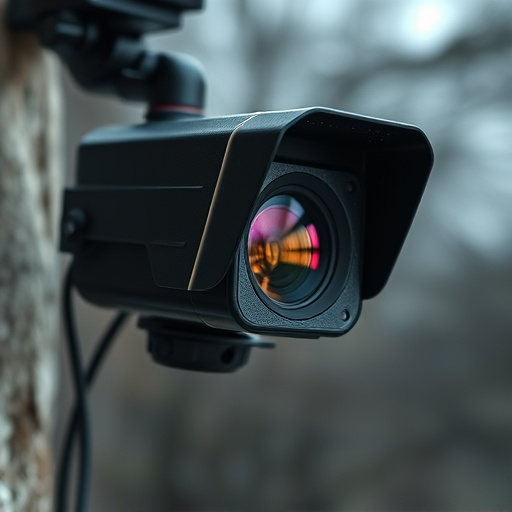Wireless Night Vision Security Cameras Indoors leverage infrared LED lighting to capture movement in darkness. The Science Behind Light Reflection Technique for Spy Camera Detection uses optics and physics to identify unique light reflection patterns indicative of hidden cameras, effective in low-light conditions. AI and Machine Learning integrate to analyze reflections, enhancing accuracy. Future innovations include more sensitive sensors and combining data from multiple sources to further fortify indoor security and privacy against unauthorized devices.
Wireless Night Vision Security Cameras Indoors have become a common sight, offering advanced surveillance with minimal intrusion. However, they also pose a risk of being exploited by hidden spy cameras. This article delves into an innovative solution: the Light Reflection Technique for Spy Camera Detection. We explore the science behind this method, its practical implementation for indoor safety, and look ahead to future trends in enhancing spy camera detection using light reflection technology.
- Understanding Wireless Night Vision Security Cameras Indoors
- The Science Behind Light Reflection Technique for Spy Camera Detection
- Practical Implementation: How to Employ Light Reflection for Indoor Surveillance Safety
- Advanced Measures and Future Trends in Spy Camera Detection using Light Reflection
Understanding Wireless Night Vision Security Cameras Indoors
Wireless Night Vision Security Cameras Indoors have become increasingly popular for home and business security due to their advanced technology and ease of use. These cameras utilize infrared (IR) LEDs to capture images in complete darkness, making them ideal for nighttime surveillance. The IR light emitted by these cameras reflects off objects in the field of view, allowing the camera to record clear, low-light footage. This reflection technique is key to their effectiveness; it enables the camera to create visible images even in complete absence of ambient light.
Understanding how Wireless Night Vision Security Cameras operate indoors involves recognizing the interplay between IR lighting and image sensors. When IR light hits an object, it bounces back towards the camera lens, illuminating any movement or activity within the room. This reflected light is then converted into a digital signal by the camera’s sensor, which processes the data to generate the final video feed. The ability to detect and record activities without being noticed makes these cameras a powerful tool for enhancing indoor security and peace of mind.
The Science Behind Light Reflection Technique for Spy Camera Detection
The Science Behind Light Reflection Technique for Spy Camera Detection
Wireless night vision security cameras indoors have become increasingly popular, offering enhanced security and peace of mind. However, their very existence raises concerns about privacy. One innovative technique to combat covert camera installations is through light reflection analysis. This method leverages the principles of optics and physics to detect the subtle signs left by spy cameras. By shining a dedicated light source onto walls, ceilings, or other surfaces within a room, any reflected light can be examined for anomalies. Spy cameras often produce unique reflections due to their artificial lighting and lens properties, enabling security professionals to identify hidden devices.
The light reflection technique is particularly effective in low-light conditions, where wireless night vision systems excel. By utilizing specific wavelengths of light, experts can minimize false positives while maximizing detection rates. This non-intrusive approach allows for regular checks without disturbing the environment, making it an ideal solution for maintaining privacy and security. The science behind this method continues to evolve, with ongoing research focusing on improving detection accuracy and expanding its applicability across various settings.
Practical Implementation: How to Employ Light Reflection for Indoor Surveillance Safety
Implementing light reflection for indoor surveillance safety involves a clever, yet simple technique that can significantly enhance the effectiveness of wireless night vision security cameras. By strategically positioning reflective surfaces, such as mirrors or highly reflective paints, near the camera location, you can create an unobtrusive yet powerful deterrent. This method leverages natural lighting during the day and artificial illumination at night to ensure optimal visibility without drawing unwanted attention.
For practical application, consider installing these reflective measures in corners, behind furniture, or along walls where cameras are placed. The key is to create a multi-directional reflection effect that allows the camera to capture clear images from various angles. This approach not only improves the quality of indoor surveillance footage but also adds an extra layer of security by making it harder for potential intruders to remain undetected due to the reduction in blind spots.
Advanced Measures and Future Trends in Spy Camera Detection using Light Reflection
The evolution of spy camera detection techniques has led to advanced measures, especially with the increasing prevalence of wireless night vision security cameras indoors. Researchers and developers are continually enhancing detection methods to keep up with the growing sophistication of hidden camera technology. One promising trend is the integration of artificial intelligence (AI) and machine learning algorithms, which can analyze light reflections and patterns to identify potential spy cameras. These systems learn from vast datasets, enabling them to detect even subtle anomalies in lighting conditions that might indicate the presence of hidden cameras.
Future developments may include more sophisticated sensors capable of detecting a broader spectrum of light wavelengths, enhancing the accuracy and range of detection. Additionally, combining light reflection analysis with other sensor data, such as heat signatures or motion patterns, could further improve camera detection capabilities. As technology advances, these innovations will contribute to creating safer environments by making it harder for unauthorized devices to go unnoticed, ensuring privacy and security for indoor spaces.
Wireless Night Vision Security Cameras Indoors have become a ubiquitous tool for home and business security, but their presence can be disguised by cunningly placed spy cameras. The Light Reflection Technique offers a promising solution through understanding the science behind light interaction with surfaces. By employing practical implementation strategies outlined in this article, individuals can enhance indoor surveillance safety. Furthermore, as technology advances, future trends in spy camera detection using light reflection promise to make these hidden threats even harder to hide, ensuring a more secure environment for all.
